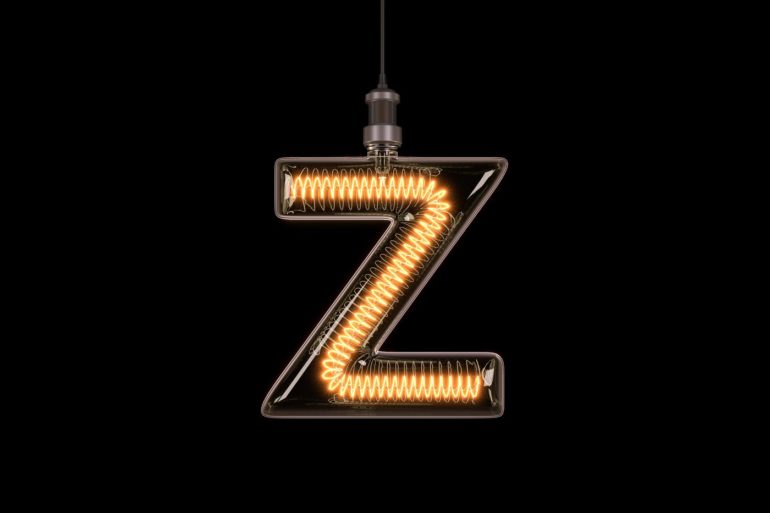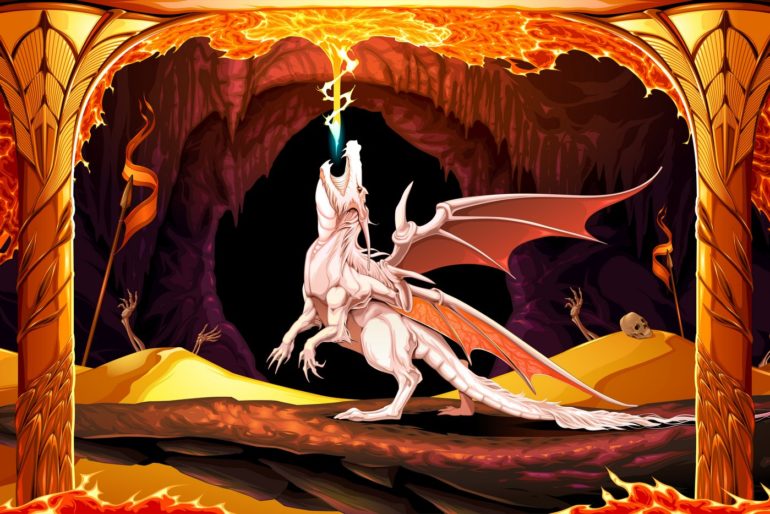How is the date of Easter determined, and why does it change every year?
Why does Easter change dates each year – and when is it coming up next?
Since Easter hops around the calendar like its namesake bunny, it’s a little tough to calculate on your own.
Apart from always occurring on a Sunday, and always during March or April (for the Western observance) and always during April or May (for the Orthodox observance), the date for Easter is not fixed on a regular calendar.
For Westerners — those who observe with western rite churches and/or the Easter bunny — Easter falls on the first Sunday after a full moon, following the vernal equinox.
Eastern rite churches (including Greek Orthodox and Russian Orthodox), however, base the dates off the Julian calendar, which Europe stopped using in 1582.
If you want to understand more, below the date chart, you can find a lot of information about the specific calculations involved, all based on an archived version of the US Navy’s Astronomical Applications Department site.

Easter dates for every year through 2050
Here’s a calendar that will get you through the first half of the 21st century:
Easter Sunday (Western): April 12, 2020
Easter Sunday (Orthodox): April 19, 2020
Easter Sunday (Western): April 4, 2021
Easter Sunday (Orthodox): May 2, 2021
Easter Sunday (Western): April 17, 2022
Easter Sunday (Orthodox): April 24, 2022
Easter Sunday (Western): April 9, 2023
Easter Sunday (Orthodox): April 16, 2023
Easter Sunday (Western): March 31, 2024
Easter Sunday (Orthodox): May 5, 2024
Easter Sunday (Western): April 20, 2025
Easter Sunday (Orthodox): April 20, 2025
Easter Sunday (Western): April 5th, 2026
Easter Sunday (Orthodox): April 12th, 2026
Easter Sunday (Western): March 28th, 2027
Easter Sunday (Orthodox): May 2nd, 2027
Easter Sunday (Western): April 16th, 2028
Easter Sunday (Orthodox): April 16th, 2028
Easter Sunday (Western): April 1st, 2029
Easter Sunday (Orthodox): April 8th, 2029
Easter Sunday (Western): April 21st, 2030
Easter Sunday (Orthodox): April 28th, 2030
Easter Sunday (Western): April 13th, 2031
Easter Sunday (Orthodox): April 13th, 2031
Easter Sunday (Western): March 28th, 2032
Easter Sunday (Orthodox): May 2nd, 2032
Easter Sunday (Western): April 17th, 2033
Easter Sunday (Orthodox): April 24th, 2033
Easter Sunday (Western): April 9th, 2034
Easter Sunday (Orthodox): April 9th, 2034
Easter Sunday (Western): March 25th, 2035
Easter Sunday (Orthodox): April 29th, 2035
Easter Sunday (Western): April 13th, 2036
Easter Sunday (Orthodox): April 20th, 2036
Easter Sunday (Western): April 5th, 2037
Easter Sunday (Orthodox): April 5th, 2037
Easter Sunday (Western): April 25th, 2038
Easter Sunday (Orthodox): April 25th, 2038
Easter Sunday (Western): April 10th, 2039
Easter Sunday (Orthodox): April 17th, 2039
Easter Sunday (Western): April 1st, 2040
Easter Sunday (Orthodox): May 6th, 2040
Easter Sunday (Western): April 21st, 2041
Easter Sunday (Orthodox): April 21st, 2041
Easter Sunday (Western): April 6th, 2042
Easter Sunday (Orthodox): April 13th, 2042
Easter Sunday (Western): March 29th, 2043
Easter Sunday (Orthodox): May 3rd, 2043
Easter Sunday (Western): April 17th, 2044
Easter Sunday (Orthodox): April 24th, 2044
Easter Sunday (Western): April 9th, 2045
Easter Sunday (Orthodox): April 9th, 2045
Easter Sunday (Western): March 25th, 2046
Easter Sunday (Orthodox): April 29th, 2046
Easter Sunday (Western): April 14th, 2047
Easter Sunday (Orthodox): April 21st, 2047
Easter Sunday (Western): April 5th, 2048
Easter Sunday (Orthodox): April 5th, 2048
Easter Sunday (Western): April 18th, 2049
Easter Sunday (Orthodox): April 25th, 2049
Easter Sunday (Western): April 10th, 2050
Easter Sunday (Orthodox): April 17th, 2050

A detailed explanation of how Easter’s date is determined
Based on material by the US Navy’s Astronomical Applications Department
Easter is an annual festival observed throughout the Christian world. The date for Easter shifts every year within the Gregorian Calendar.
The Gregorian Calendar is the standard international calendar for civil use. In addition, it regulates the ceremonial cycle of the Roman Catholic and Protestant churches.
The current Gregorian ecclesiastical rules that determine the date of Easter trace back to 325 CE at the First Council of Nicaea, convened by the Roman Emperor Constantine. At that time the Roman world used the Julian Calendar (put in place by Julius Caesar).
The Council decided to keep Easter on a Sunday, the same Sunday throughout the world. To fix incontrovertibly the date for Easter, and to make it determinable indefinitely in advance, the Council constructed special tables to compute the date.
These tables were revised in the following few centuries resulting eventually in the tables constructed by the 6th century Abbot of Scythia, Dionysis Exiguus. Nonetheless, different means of calculations continued in use throughout the Christian world.
In 1582, Gregory XIII (Pope of the Roman Catholic Church) completed a reconstruction of the Julian calendar and produced new Easter tables. One major difference between the Julian and Gregorian Calendar is the “leap year rule.”
Universal adoption of this Gregorian calendar occurred slowly. By the 1700s, though, most of western Europe had adopted the Gregorian Calendar. The Eastern Christian churches still determine the Easter dates using the older Julian Calendar method.
The usual statement, that Easter Day is the first Sunday after the full moon that occurs next after the vernal equinox, is not a precise statement of the actual ecclesiastical rules. The full moon involved is not the astronomical Full Moon, but an ecclesiastical moon (determined from tables) that keeps, more or less, in step with the astronomical Moon.
The ecclesiastical rules are:
- Easter falls on the first Sunday following the first ecclesiastical full moon that occurs on or after the day of the vernal equinox;
- this particular ecclesiastical full moon is the 14th day of a tabular lunation (new moon); and
- the vernal equinox is fixed as March 21.
The result is that Easter can never occur before March 22 or later than April 25. The Gregorian dates for the ecclesiastical full moon come from the Gregorian tables.
Therefore, the civil date of Easter depends upon which tables — Gregorian or pre-Gregorian — are used. The western (Roman Catholic and Protestant) Christian churches use the Gregorian tables; many eastern (Orthodox) Christian churches use the older tables based on the Julian Calendar.
In a congress held in 1923, the eastern churches adopted a modified Gregorian Calendar and decided to set the date of Easter according to the astronomical Full Moon for the meridian of Jerusalem. However, a variety of practices remain among the eastern churches.
There are three major differences between the ecclesiastical system and the astronomical system:
1. The times of the ecclesiastical full moons are not necessarily identical to the times of astronomical Full Moons. The ecclesiastical tables did not account for the full complexity of the lunar motion.
2. The vernal equinox has a precise astronomical definition determined by the actual apparent motion of the Sun as seen from the Earth. It is the precise time at which the apparent ecliptic longitude of the Sun is zero. (Yes, the Sun’s ecliptic longitude, not its declination, is used for the astronomical definition.) This precise time shifts within the civil calendar vary slightly from year to year. In the ecclesiastical system, the vernal equinox does not shift; it is fixed at March 21 regardless of the actual motion of the Sun.
3. The date of Easter is a specific calendar date. Easter starts when that date starts for your local time zone. However, the vernal equinox occurs at a specific date and time all over the Earth at once.
Inevitably, then, the date of Easter occasionally differs from a date that depends on the astronomical Full Moon and vernal equinox. In some cases, this difference may occur in some parts of the world and not in others because two dates separated by the International Date Line are always simultaneously in progress on the Earth.
For example, take the year 1962. In 1962, the astronomical Full Moon occurred on March 21, UT=7h 55m – about six hours after astronomical equinox.
The ecclesiastical full moon (taken from the tables), however, occurred on March 20, before the fixed ecclesiastical equinox at March 21. In the astronomical case, the Full Moon followed its equinox; in the ecclesiastical case, it preceded its equinox.
Following the rules, Easter, therefore, was not until the Sunday that followed the next ecclesiastical full moon (Wednesday, April 18) making Easter Sunday, April 22.
Similarly, in 1954, the first ecclesiastical full moon after March 21 fell on Saturday, April 17. Thus, Easter was Sunday, April 18. The astronomical equinox also occurred on March 21. The next astronomical Full Moon occurred on April 18 at UT=5h.
That’s why in some places in the world, Easter was on the same Sunday as the astronomical Full Moon.
Math lesson: Computing the date of Easter
The rule is that Easter is the first Sunday after the first ecclesiastical full moon that occurs on or after March 21. The lunar cycles used by the ecclesiastical system are simple to program. The following algorithm will compute the date of Easter in the Gregorian Calendar system.
The algorithm uses the year, y, to give the month, m, and day, d, of Easter. The symbol * means multiply.
Please note the following: This is an integer calculation. All variables are integers and all remainders from division are dropped. For example, 7 divided by 3 is equal to 2 in integer arithmetic.
c = y / 100
n = y - 19 * ( y / 19 )
k = ( c - 17 ) / 25
i = c - c / 4 - ( c - k ) / 3 + 19 * n + 15
i = i - 30 * ( i / 30 )
i = i - ( i / 28 ) * ( 1 - ( i / 28 ) * ( 29 / ( i + 1 ) )
* ( ( 21 - n ) / 11 ) )
j = y + y / 4 + i + 2 - c + c / 4
j = j - 7 * ( j / 7 )
l = i - j
m = 3 + ( l + 40 ) / 44
d = l + 28 - 31 * ( m / 4 )
For example, using the year 2010,
y=2010,
c=2010/100=20,
n=2010 – 19 x (2010/19) = 2010 – 19 x (105) = 15, [see note above regarding integer calculations]
etc. resulting in Easter on April 4, 2010.







